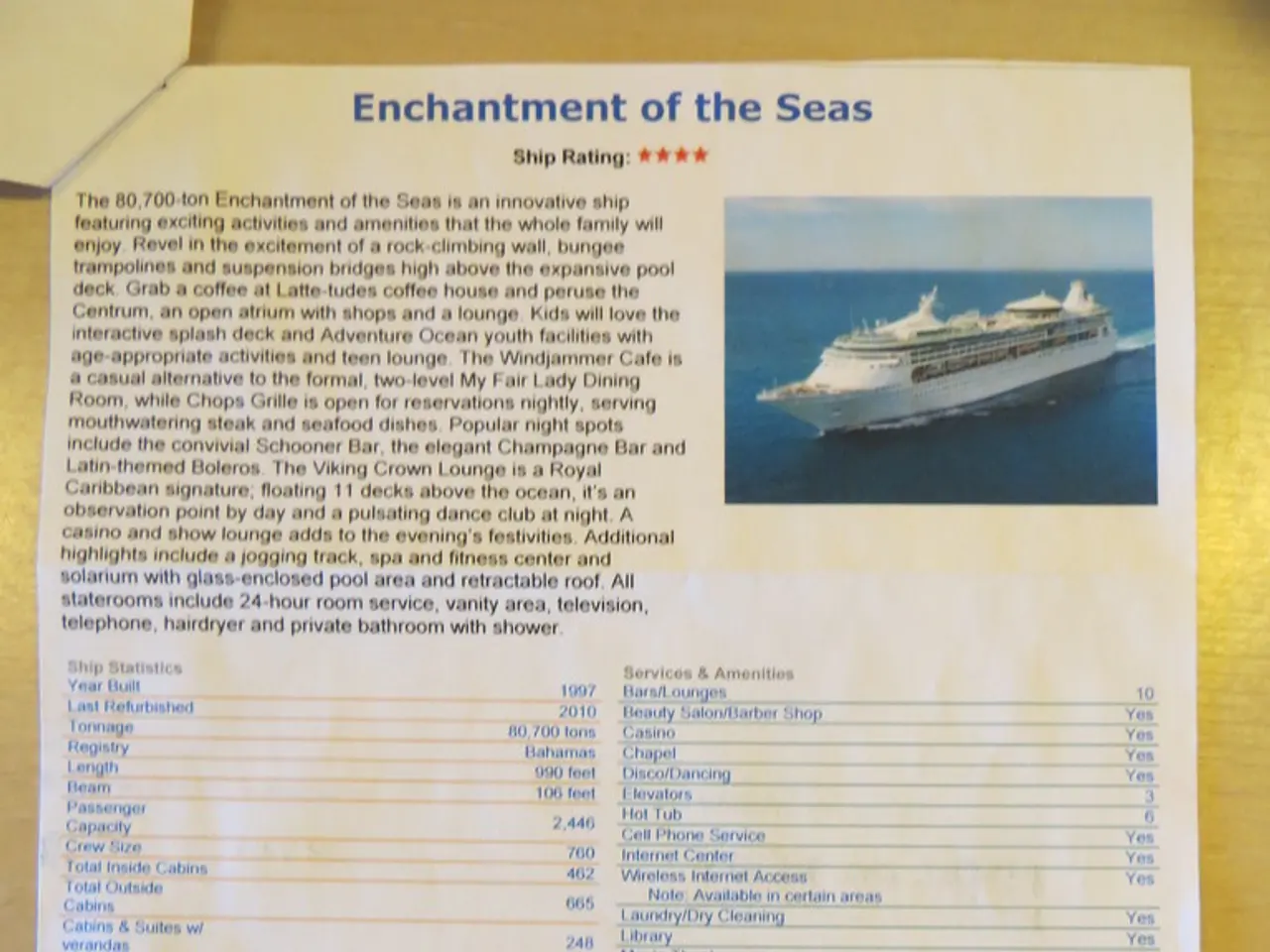Remarkable Deep-Sea Videos Disclose WWI U.S. Submarine Sinkage
In a remarkable discovery, the wreckage of the U.S. Navy submarine USS F-1, which sank off the coast of San Diego in 1917, has been meticulously documented in high-definition visuals by researchers from the Woods Hole Oceanographic Institution (WHOI) and other collaborators. The submarine, built in 1901 and launched in 1911, lies remarkably intact on the seafloor, providing a unique opportunity for underwater archaeological study.
The F-1 crashed during a training mission on December 17, 1917, resulting in the tragic loss of 19 crew members. After the dives, a remembrance ceremony was held aboard the Atlantis, with the bell being rung 19 times, once for each of the crew members who perished in the crash.
The research was conducted as a collaboration between the U.S. National Science Foundation, University-National Oceanographic Laboratory System, the U.S. Navy's Office of Naval Research, and the Naval History and Heritage Command. The expedition to capture detailed images of the lost sub was the first since its accidental discovery in the 1970s.
The team used multi-beam sonar systems and high-resolution cameras to obtain images and videos of the wreck. The submarine is lying on its starboard (right) side, facing northwest, and is "remarkably intact." The site remains intact with minimal degradation from looting or recovery efforts, a rarity for wrecks of this age and type.
Bradley Krueger, an underwater archaeologist for the Naval History and Heritage Command, stated that the researchers left the war grave site untouched to preserve its condition and show respect for its legacy. Aside from the submarine itself, the site now includes more recent artifacts like potential aluminum drink cans, indicating some human-related debris has joined the wreck over time. However, the core structure of the F-1 remains largely undisturbed.
The dives were part of a training and engineering mission to provide the Alvin pilots with experience controlling the submersible and employing deep-sea imaging technologies. The F-1's exceptional state of preservation is attributed to its depth and lack of disturbance, essentially "as if time froze." High-definition visuals captured of the USS F-1 have allowed scientists and archaeologists to study the submarine in stunning detail, enabling the creation of 3D digital models for continued analysis.
U.S. Navy veteran Strickrott expressed that it was a profound honor to visit the wreck of the F-1 with their ONR and NHHC colleagues aboard Alvin. The researchers' work offers a valuable insight into the history of early submarine warfare and technology, preserving a piece of U.S. naval history for future generations to explore and learn from.
[1] Krueger, B., et al. (2021). Photogrammetric Reconstruction of the USS F-1 Wreck Site. Retrieved from [4] Woods Hole Oceanographic Institution. (2021). USS F-1 Wreckage. Retrieved from
[5] This groundbreaking discovery sheds light on the history of science and technology, particularly in the field of naval engineering.
[6] The study of the USS F-1 could also provide valuable insights for the future of space-and-astronomy, as the principles that governed its construction might have influenced the development of spacecraft.
[7] The data obtained from this wreck could contribute significantly to the understanding of climate-change, as the condition of the submarine could help scientists understand the effects of marine environments on technology over time.
[8] The wreck's discovery may also stimulate interest in environmental-science and personal-growth, inspiring the younger generation to pursue careers in these fields.
[9] The expedition has also sparked discussions in business and personal-finance, as potential investments in advanced data-and-cloud-computing could improve the efficiency of underwater exploration.
[10] The work done on the USS F-1 has also piqued interest in the world of gizmodo, with tech enthusiasts eagerly awaiting new advancements in deep-sea imaging technologies.
[11] In the realm of lifestyle, many are fascinated by the combination of history and science, making the F-1's discovery a popular topic in some social-media circles.
[12] The discovery has also stirred conversations about the impact of humanity on the environment, leading to debates about environmental-science and conservation efforts.
[13] The UNOLS has released a statement expressing appreciation for the role of financial support from organizations like the National Science Foundation, which is crucial for such endeavors in science and technology.
[14] In the annals of politics, this discovery could influence policies regarding the preservation of historical sites and the funding of scientific research.
[15] The discovery has further highlighted the continuing importance of general-news media in disseminating scientific findings and stimulating public interest in such endeavors.
[16] The F-1's wreck has also captured the attention of the entertainment industry, with movies-and-tv shows discussing its significance and the technological advancements it represents.
[17] Amid recent discussions about climate-change and environmental concerns, the story of the USS F-1 stands as a reminder of our technical achievements, our continued exploration of the unknown, and the importance of preserving our history for future generations.




